INSIDE SCOOP ON MOTOCROSS ACTION’S 125 TWO-STROKE SHOOTOUT
Motocross Action has been testing 125 two-strokes since 1973, but it has been a while since we’ve lined them all up for a full-on shootout. We did a hopped-up 125 shootout eight months ago, a 2020 KTM 125SX versus Yamaha YZ125 versus Husqvarna TC125 shootout late last year and a 2020 125 project bike shootout earlier last year—but we haven’t felt compelled to do a comprehensive 125 shootout because we only had three 125 brands to deal with (after Honda, Kawasaki and Suzuki dropped out of the two-stroke biz). But, for our “2021 MXA 125 Two-Stroke Shootout,” we rounded up an Italian bike, a Japanese bike, an Austrian bike, a Swedish bike (made in Austria) and a Spanish bike (also made in Austria). Plus, the MXA wrecking crew has been in shootout mode lately; our “450 Shootout” ran in the April issue, our “250 Shootout” in the May issue and now the 125 two-strokes get their time in the limelight in June.
There was a time when 125 two-strokes were on the verge of extinction. They had been replaced by 250cc four-strokes with the aid of draconian AMA rule changes, not the least of which were giving four-stroke engines a 100-percent increase in displacements (250cc four-strokes against 125cc two-strokes) and handicapping two-strokes with a leaded fuel ban (which two-strokes need to run high-compression engines). Still, the MXA wrecking crew never gave up on them. We continued to test and write articles about two-strokes through the dark years, and now that the two-stroke market is booming again, we feel vindicated for our years of continuing to test 125s when everyone else gave up.
We owe a debt of gratitude to Yamaha for refusing to drop its two-stroke motocross bikes when its fellow Japanese manufacturers jumped ship. We owe an even bigger slap on the back to KTM’s Stefan Pierer for not just continuing to build two-strokes but for advancing the technology in ways that will keep two-strokes viable for coming generations. Everybody is a genius when they sell bikes that fly off the showroom floors, but Yamaha and KTM stayed the course when 125s languished on the sales charts.
The two-stroke revival of the past five years isn’t just a sales phenomenon but also a living, breathing, growing organism on tracks across America. Two-strokes are fun to ride, something that was almost forgotten when the booming thumpers took over starting back in 1998. Best of all, two-strokes are now being raced again—even by Pro riders, young and old, who have found new opportunities at the local money-paying 125 events. Races like the Wiseco World Two-Stroke Championship at Glen Helen, the 125 All-Star series at the AMA Nationals, the two-stroke-only Red Bull Straight Rhythm, the Washougal 125 Dream Race and SoCal’s Pasha 125 Open series have stoked the fires of two-stroke enthusiasm in America again. In Europe, the EMX125 series has been a successful feeder class for the MXGP 250 World Championship.
What’s new on the 2021 125s? Although the changes aren’t earth-shattering, they are bigger than what you would expect. The TM 125MX and the TM 144MX are currently our favorite models from Italy, and we were glad to include the 125 in this year’s shootout. As far as technical changes go, the TM earned an updated power-valve system and a sixth gear in 2020-’21; plus, the Italians shaved some weight from the frame and updated the suspension settings. The 2021 KTM and Husqvarna 125s sport all-new WP XACT air-fork internals to match the four-stroke line, and they gained a new mid-valve damping component that they didn’t have before. The white and orange brothers also got vented airbox covers, roller throttle housings, updated pistons, new inner clutch hub sleeves and revised suspension settings. The GasGas MC 125 is all-new for 2021. As with the GasGas MC 250F and 450F four-stroke models, the GasGas MC 125 uses a KTM platform with a few tweaks. As for the tried-and-true Yamaha YZ125, the meat and potatoes remain the same. The blue bike has only seen minor changes since it got its aluminum frame in 2005 and its legendary Kayaba SSS forks in 2006.
You’d be fooling yourself if you didn’t admit that power is the holy grail in 125 racing. A slow 450 can still be competitive with a decent rider on it, but a slow 125 creates a gap on corner exit that is much harder to close. But, the fact that 125s are lighter and slower improves their handling even more. Now let’s go a little deeper into the five 2021 125 two-strokes that make up the field in the “2021 MXA 125 Two-Stroke Shootout” (in numerical order).
2021 GASGAS MC 125
The GasGas 125 is KTM’s and Husqvarna’s new brother, and it’s the only full-size two-stroke in GasGas’ 2021 motocross model lineup; GasGas doesn’t offer an MC 250 two-stroke, just the MC 125, MC 85, MC 65 and MC 50. We expect GasGas to expand its lineup in the future with a GasGas MC 250 two-stroke and GasGas MC 350 four-stroke, kind of like Husqvarna did a few years after being purchased by KTM. The 2021 MC 125 uses the same KTM/Husky engine, mated to KTM’s aluminum subframe, re-valved WP float-valve forks, forged aluminum triple clamps, OEM Maxxis tires, non-branded silver rims, silver Neken handlebars, Husqvarna swingarm, ultra-small bar pad, textured seat cover, new fuel tank and unique red bodywork.
On the track, the GasGas MC 125 feels a lot like a KTM, but there are three puzzle pieces that set the red machine apart from the orange bike in motion. (1) Triple clamps. The forged triple clamps are more flexible than the CNC-machined billet aluminum clamps on the KTM/Husky bikes. Coming out of the corners, the GasGas tends to oversteer in and understeer out. As set up out of the factory, the GasGas MC 125 isn’t as precise as its Austrian buddies. In some corners, the bike wants to push, which throws it off balance. Originally, we elected to slide the forks up in the clamps and torque the top clamp to 20 N/mm and the bottom bolts to 15 N/mm to stiffen up the front-end feel. This helped, but once we put stock KTM 125 billet triple clamps on the GasGas, we knew this was the true fix. (2) Airbox cover. When the KTM, Husky and GasGas engines are the same, the biggest variable among them is air flow. The KTM breathes best, the Husky second best and the GasGas third best. You really don’t need to be Sherlock Holmes to guess how much of a difference a vented airbox cover makes. (3) Suspension settings. The GasGas 125’s suspension settings are softer than its brothers and more tailored to Novice and Vet riders, not 125 Pros. However, that isn’t the worst thing either. We all know most Pros get their suspension re-valved anyways and GasGas tailored their settings to the average rider. Yes, it’s softer than KTM and Husky, but it has great hold up and we hardly ever bottomed out. Overall, we liked the MC 125’s plush suspension but aren’t huge fans of the triple clamps or airbox cover.
2021 TM 125MX
A few years ago, every MXA test rider complained about TM’s tall handlebars, stiff shock spring, poorly valved Kayaba forks and stinkbug stance. But, Ralf Schmidt, TM Racing USA’s importer, has guided the Italian factory to Americanize its setup, and most test riders love the 125MX’s rider triangle (footpeg, seat and handlebar geometry).
The Italian engine tops out at 35.75 horses, which is less than the three Austrian bikes at peak, but the TM is actually stronger than the KTM, Husky, and GasGas from 10,000 rpm to 10,600 rpm, which is where the 17.05 pound-feet of torque is situated. When shifted on the power bubble, our more experienced test riders enjoyed the TM 125MX. The only issue with the 2021 TM 125MX is that it takes big skill to ride in the small window of power. TM’s competition is much more forgiving in the hands of less skilled riders. In its stock form, the TM 125MX is hard to get into the rpm range where it sings and is not kind to riders who over-rev beyond peak.
Our test riders aren’t perfect, and when they missed the shift points, the competition pulled away. As for handling, our lighter testers in the 140- to 155-pound range felt that the suspension was harsh, while our heavier riders in the 180- to 200-pound range really liked it. For them, the Kayaba forks and TM shock worked together to create a smooth and predictable response in the bumps. Our only squawk is that it’s over-sprung for the average 125 rider.
We were impressed with the TM 125MX package. The power and handling platforms are good; they leave a little on the table. The TM is 1.76 horses faster than the YZ125, but when you make a mistake (over-rev or short-shift), the YZ125 makes up its horsepower deficit in short order. It takes some patience to learn how to ride the TM properly, but we see great potential with this bike. It is “almost a works bike” with a bevy of hand-made components, polished aluminum and Italian flair. It’s also “almost a works bike” with its all-or-nothing powerband.
2021 KTM 125SX
The KTM 125SX is strong. We’ve been testing this model (and the YZ125) for many years now and, thankfully, KTM has continued to spend time and money improving its two-stroke lineup. Prior to 2021, the WP air forks didn’t have shims at the mid-valve because the WP technicians were breaking and bending shims whenever they tried to create a setting soft enough for the lightweight two-stroke model range. Now, with a new float valve setting at the mid-valve, WP is able to add damping shims to the mid-valve. The fork valving is used to control how fast the suspension moves in both directions, while the air spring primarily holds the bike up so that it has ample suspension travel to absorb bumps, jumps and whoops. The plus of air forks is that they can easily be adjusted stiffer or softer to compensate for track conditions, personal taste and rider weight. Another plus about WP forks is that since the traditional fork springs are replaced by air, they are on average 3 pounds lighter than standard coil spring forks. Less weight equals more power in motion.
On the track, the 2021 KTM 125SX is a screamer. It continues to pull until it hits 37.52 horsepower at 11,200 rpm—impressive numbers for a box-stock 125 engine. Although the KTM is actually edged out by the Husky slightly at peak on the dyno, the larger holes on the KTM airbox cover create a noticeable improvement in throttle response and rev speed. The vented airbox holes are not as big a deal on the dyno, because airflow on the dyno is limited to fans blowing into the radiators; but, on a track at speed, the KTM processes air quicker and more efficiently than the Husky. As for the handling, the KTM 125SX suspension felt great. It wasn’t overly stiff, but the valving held up stronger than the rest. When we jumped too long or too short or hit big braking bumps, the KTM suspension soaked up the big hits better than its stablemates. The KTM’s brothers (Husky/GasGas) were softer, which was nice in corners but not as forgiving when landing hard. In conclusion, after riding the competition, the KTM doesn’t feel like a 125. It feels more like a 150, and we love racing it.
2021 HUSQVARNA TC125
The Husky TC125 comes with the same lowered suspension platform that the rest of the 2021 Husqvarna lineup got, with the same fork internals as the KTM and GasGas, including the new and improved air and oil bypass systems that give the fork a better connection to the ground. The suspension also has unique valve settings that are softer than KTM’s but stiffer than GasGas’. As always, the airbox is a hot topic when we discuss the Husky. It looks unique aesthetically and sounds attractive when you mention that the subframe is made of carbon composite (really just plastic), but on the track, the shape of the airbox and the design of its cover suppress the engine’s breathing. The only other minor difference from the KTM is the Husky’s smooth Magura clutch actuation instead of the “pop feel” of KTM’s Brembo system. Internally, the engine is the same, and that’s why we harp on the airbox so much; it’s the only physical variance between the two bikes—and it’s noticeable.
On the track, the Husky 125 is slightly harder to get up into the meat of the powerband than the KTM. Yes, the power feels very similar, but the surge isn’t as intense on the white bike, and it takes a little more skill to get into the power. The KTM gets up and goes. The Husky takes a little more time to accelerate but is smoother and broader feeling when it goes. As for the handling of the Husqvarna TC125, every MXA test rider loved it. As with the rest of the 2021 Husky lineup, the WP fork travel is shortened by 10mm, and the geometry of the bell crank, link arms and shock shaft travel are changed to bring the rear end of the Husky down about an inch. The lower platform is great for everyone ranging from the highly experienced to the very inexperienced. And yes, even our 6-foot-tall riders like the lower bike. One minor quirk: the seat cover is really slippery on the Husky, but last year it was really abrasive.
2021 YAMAHA YZ125
Used YZ125s have continued to grow in popularity, nostalgia and price. No bike in the history of motocross has rolled down the assembly line with so few updates for so many years. On one hand, that is an indication of how old the YZ125 design is today, but, on the other hand, it speaks volumes about how great the YZ125 was when it was first introduced. And, it is the unchanging nature of the YZ125 that makes it so popular as a used bike. An aspiring racer can buy a 2006, 2012, 2018 or any year in between Yamaha YZ125 and have a bike that looks and runs like the 2021 model on the Yamaha dealer showroom floors.
On the track, the Yamaha YZ125 is the easiest bike to get around on, and it’s the bike we recommend to first-time riders wanting to get into the sport. It’s a great learning tool, terrific fun to ride and doesn’t cost an arm and a leg to maintain. It’s not bullet proof, but, with a 15-year backlog of knowhow, most of its problems have been addressed. Although it has the lowest horsepower numbers (1.76 horses below the TM 125MX and 3.61 horsepower off the Husky TC125), the Yamaha’s power delivery picks up better at the crack of the throttle than most of the missile-guided 125 engines. On the dyno, the Yamaha is strongest in torque and horsepower from 6600 rpm to 7800 rpm (by as much as 0.3 pound-feet of torque and 0.55 horses). Obviously, the rpm range where the YZ125 outshines its competition can’t be considered to be the meat of a 125’s powerband, but it does make the YZ125 easier to get out of a pinch. The real problem for the YZ125’s power is that after 7800 rpm, the YZ125 power curve sinks well below the other four 125s. The YZ125 peaked at 33.99 horsepower at 11,700 rpm. That’s a big handicap on long straights, in deep sand and on big hills.
As for handling, we can’t complain about the YZ125. The SSS forks are superb, and the YZ125 is as predictable as they come. We just wish Yamaha would invest some R&D money into this engine again. If they did, the buying public would go nuts for it.
HOW THE LATEST GENERATION 125s RANK IN THE 2021 MXA 125 SHOOTOUT
Before we celebrate the “2021 MXA 125 Bike of the Year,” let us explain fifth through second places, starting off with the 2021 TM 125MX. We see great potential with this bike. Its stock engine is stronger than the Yamaha’s and the suspension is stable but over-sprung. We know the TM 125MX isn’t going to please everyone, but it was never meant to. TM is a boutique brand that hand makes its bikes and produces a small fraction of units when compared to its competition. The TM 125MX is built for riders who like to go against the grain and, like all TM motorcycles, it can be custom ordered with a factory TM modified engine, spring rates and much, much more. The TM 125 MX placed fifth.
Next, the Yamaha YZ125 is ultra-fun to ride and its suspension is bulletproof. Although the WP XACT air forks have made up almost all of the ground between them, the Kayaba SSS forks still hold one large advantage over the air forks—maintenance. You don’t need to set the air pressure with a special fork pump each time you ride. However, the YZ125 has been in for a challenge when entering into any 125 shootout undertaken in the last five years. This shootout, like every MXA shootout, is scored based on each bike’s racing abilities in its stock form. The YZ125 hasn’t kept up with the Austrian bikes in terms of handling, power, clutch, brakes and horsepower. The YZ125 is great, but only if you’re only racing against other Yamahas. If you are on the racetrack with KTMs, Huskys and GasGas bikes, you’ll need to spend a lot of money to modify your YZ125 so it can erase its almost 4-horsepower deficit. The 2021 Yamaha YZ125 placed fourth.
As for the 2021 GasGas MX125, we like the plush suspension, and we love the way it looks, but it suffers slightly in the power department, not because it isn’t capable of producing class-leading horsepower, but because the KTM overseers didn’t want it to. The GasGas wasn’t meant to beat the KTM; it was made to steal customers away from Yamaha with a price that’s $600 less than the KTM 125SX and only $200 above the Yamaha YZ125. Our lap times on the GasGas were anywhere from 0.5 seconds to 1.5 seconds off the KTM, but still faster than the YZ125 and TM 125MX; the GasGas MC 125 finished in third place.
After Husqvarna won our 2021 250 four-stroke and 450 four-stroke shootouts, the white bike came into the “2021 MXA 125 Shootout” with lots of momentum. MXA has complained for years that modern motocross bikes were too tall, but nobody would listen to us until 2021 when Husky answered our call by lowering its bikes by almost an inch at the seat. On the track, the lower Husky TC125 was a revelation; it was easier to turn, more accurate at speed and had the uncanny ability to find traction.
Of the five bikes in the “2021 MXA 125 Shootout,” the Husqvarna TC125 handled the best, but all was not right with the world. Husqvarna’s molded plastic/carbon composite airbox/subframe doesn’t breathe well enough to produce snappy and responsive throttle response. The airbox is what cost the 2021 Husky TC125 a “Bike of the Year” sweep of the 125, 250 and 450 shootouts. The KTM designers had race wins in mind when they added vent holes to their airbox cover, while the Husqvarna designers went with the stylish-but-slow approach on their vents. Every MXA test rider preferred the lower chassis of the Husky, but, as we said in the beginning, power reigns supreme in the 125 class. No 125 racer wants to give up power when it comes time to go racing, and that means the Husky TC125 scores second place.
THE WINNER OF THE 2021 125 TWO-STROKE MOTOCROSS BIKE OF THE YEAR AWARD IS…
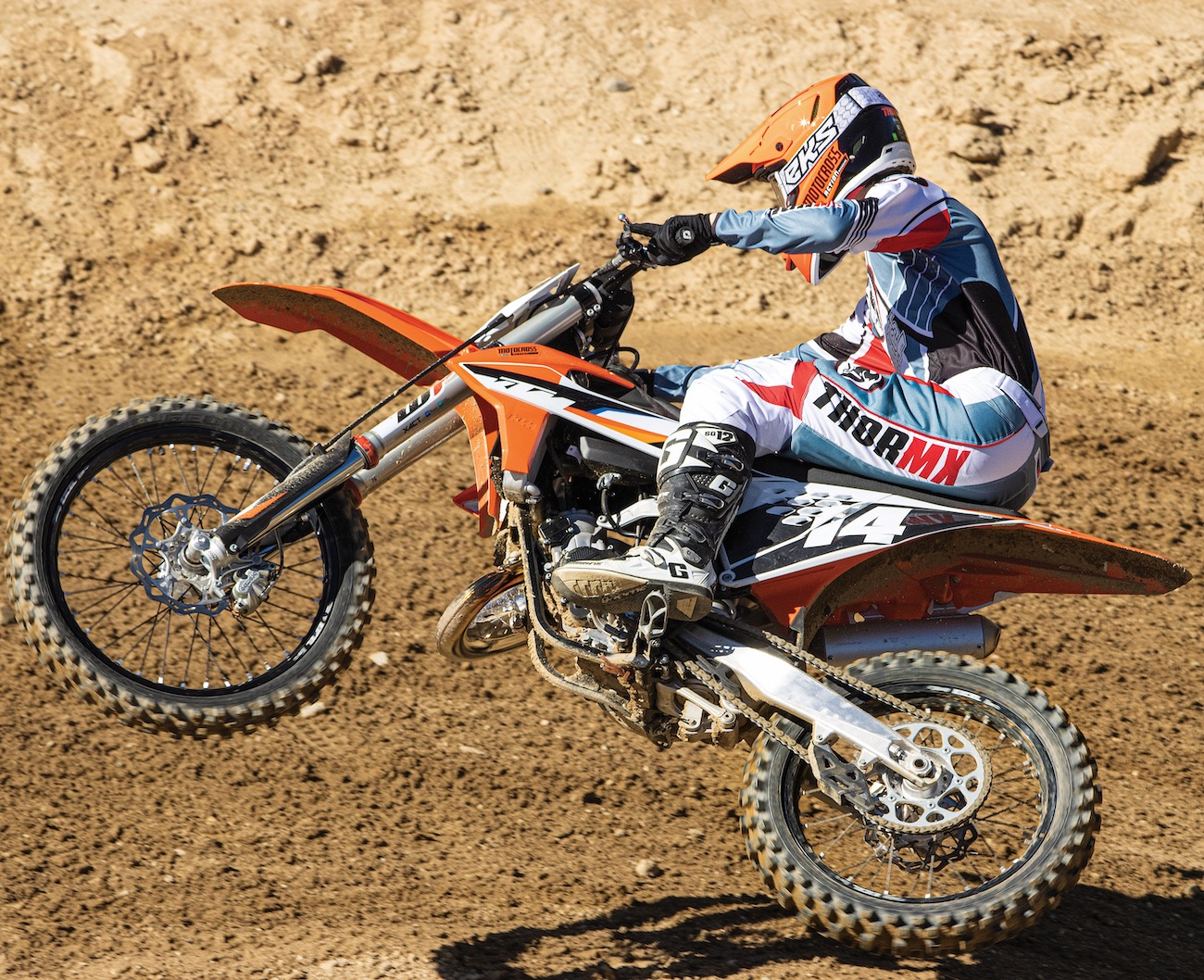
And, the “2021 MXA 125 Bike of the Year” is the 2021 KTM 125SX. It has the strongest power and best overall accoutrements for hardcore racing. We only wish it had Husqvarna’s lowered suspension on it.


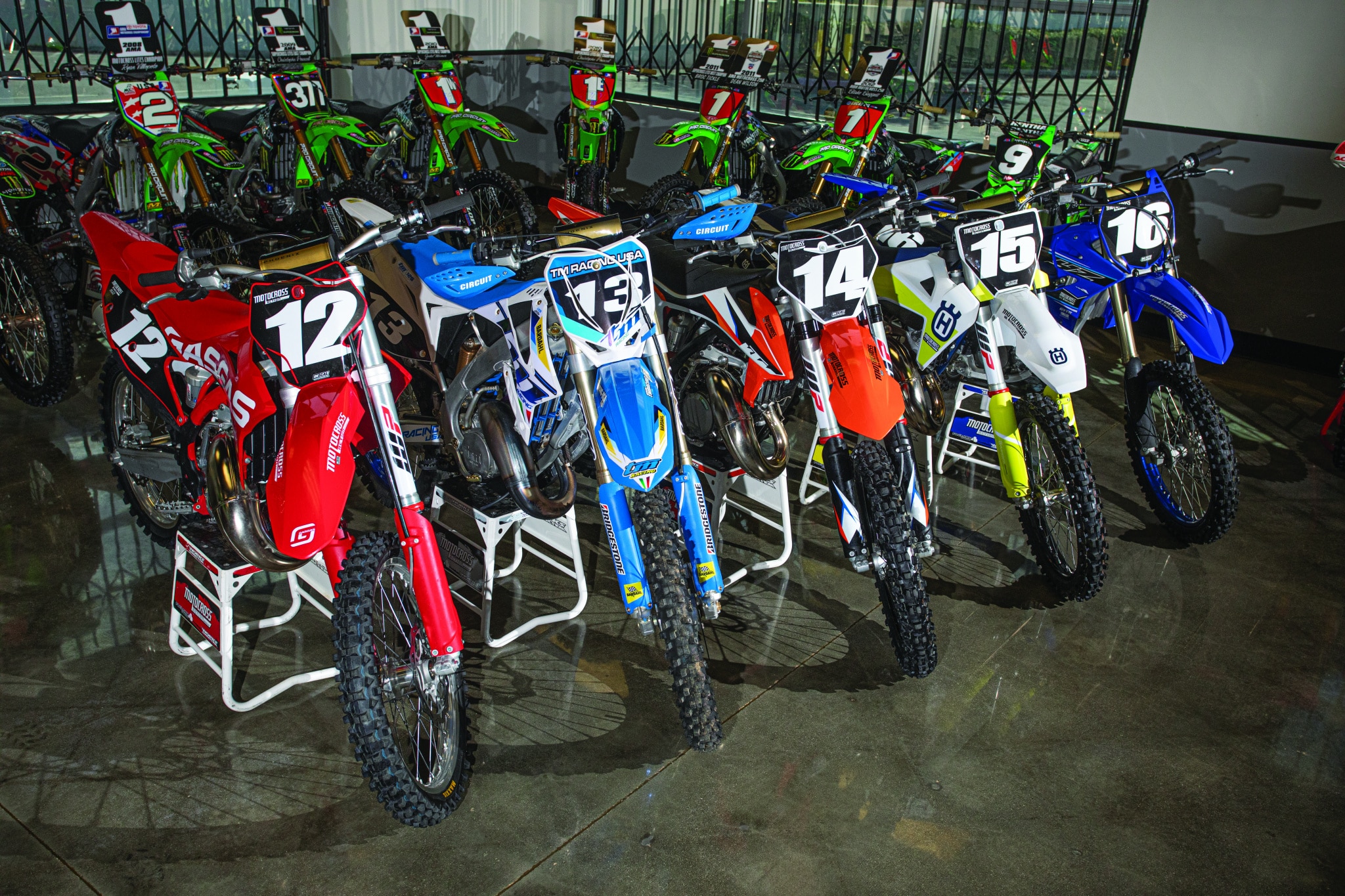
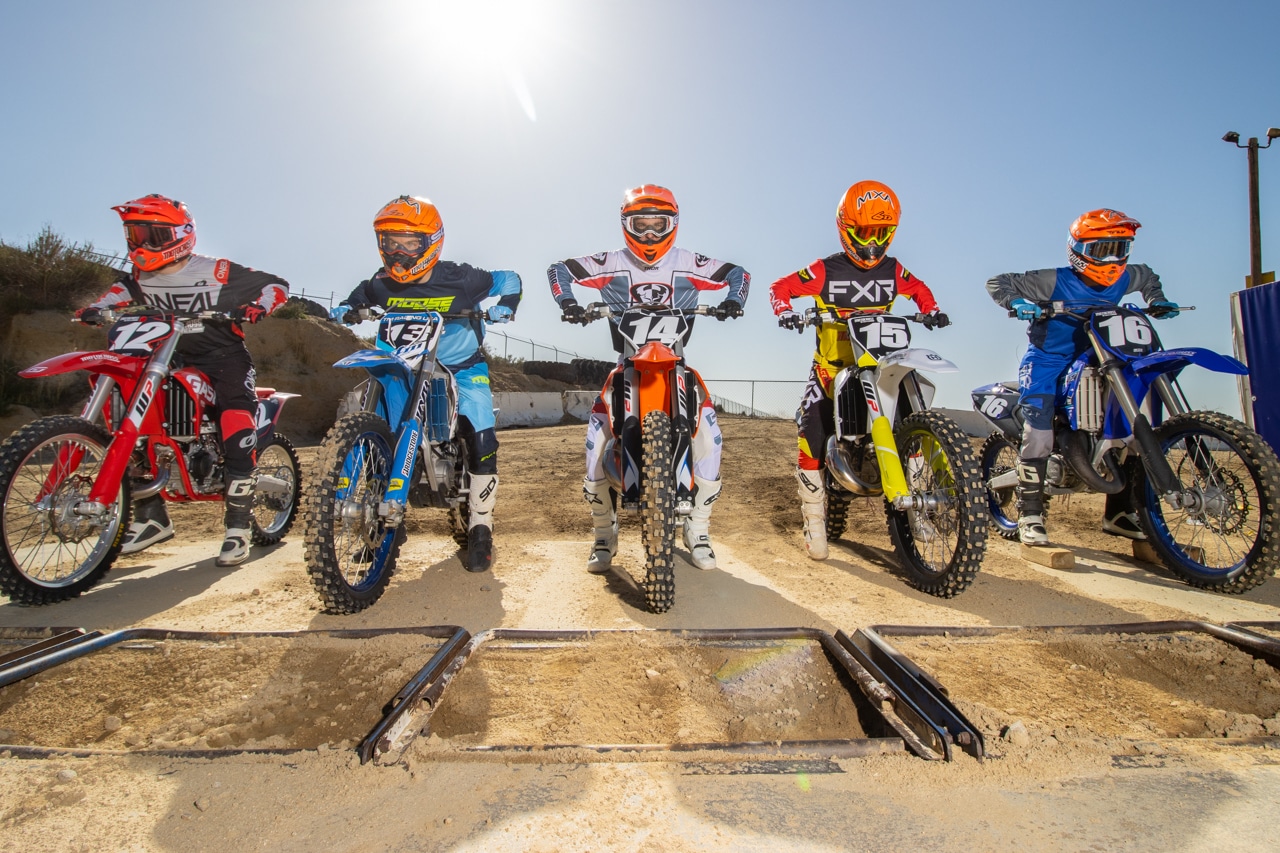
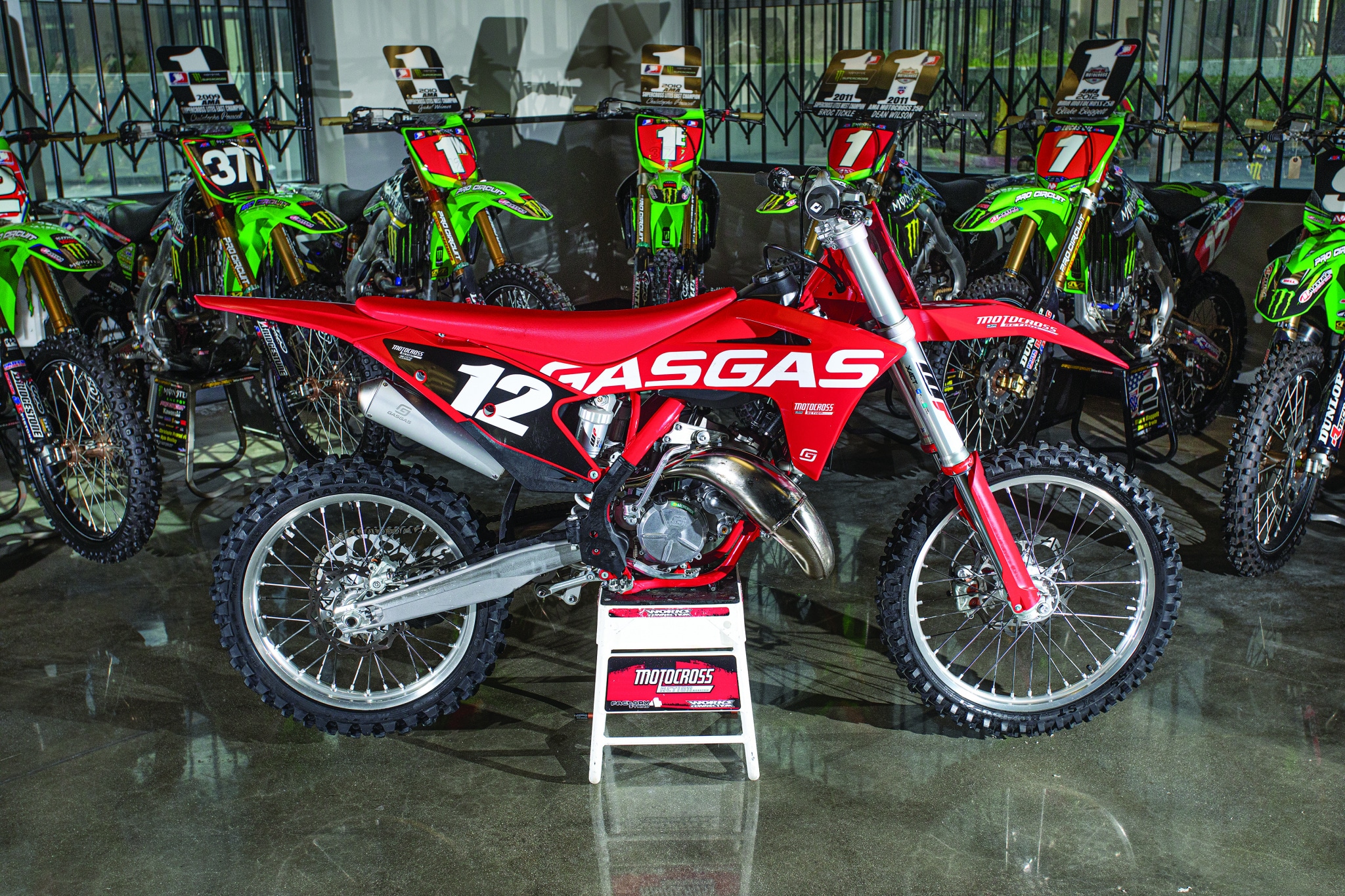
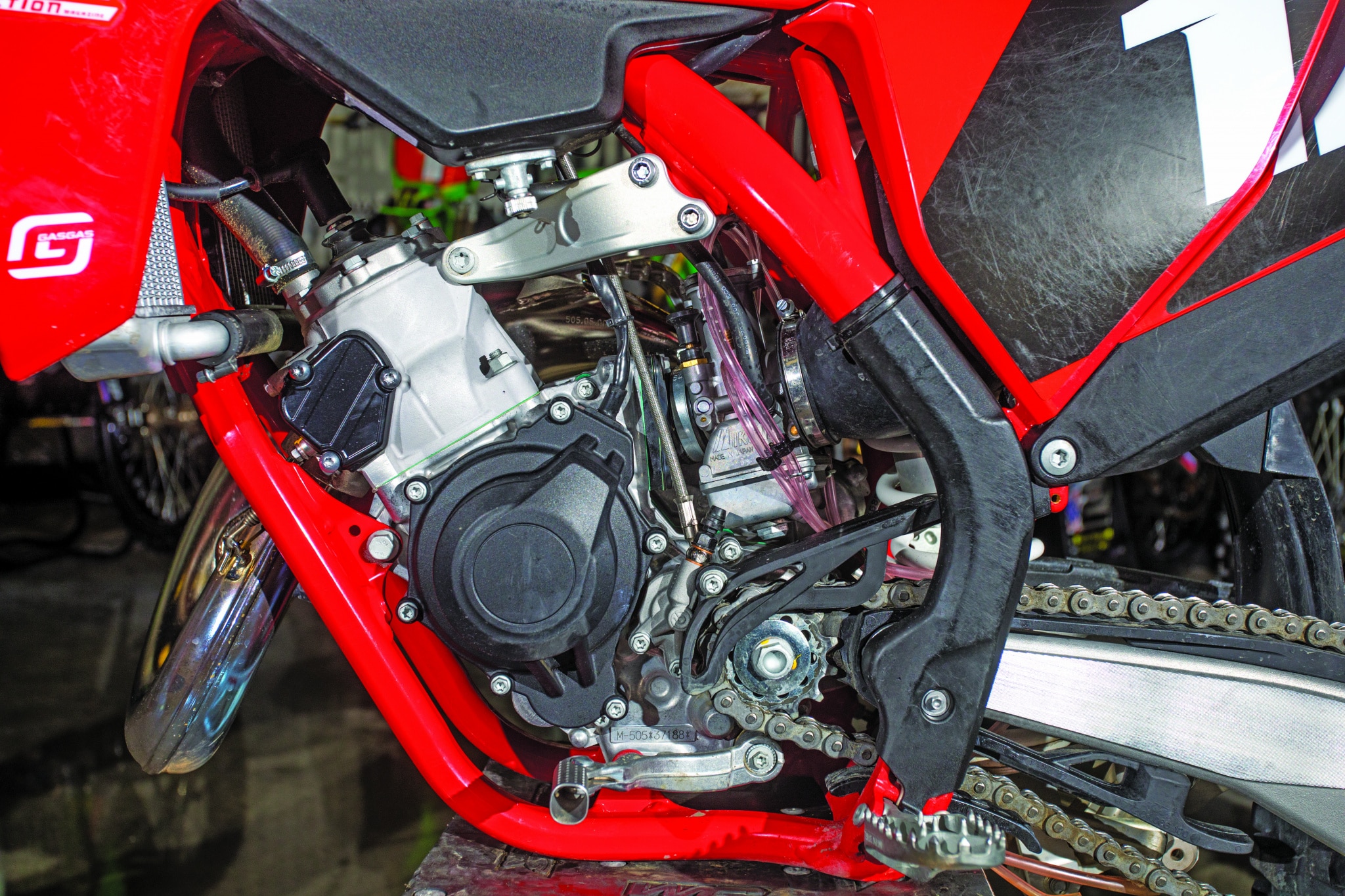
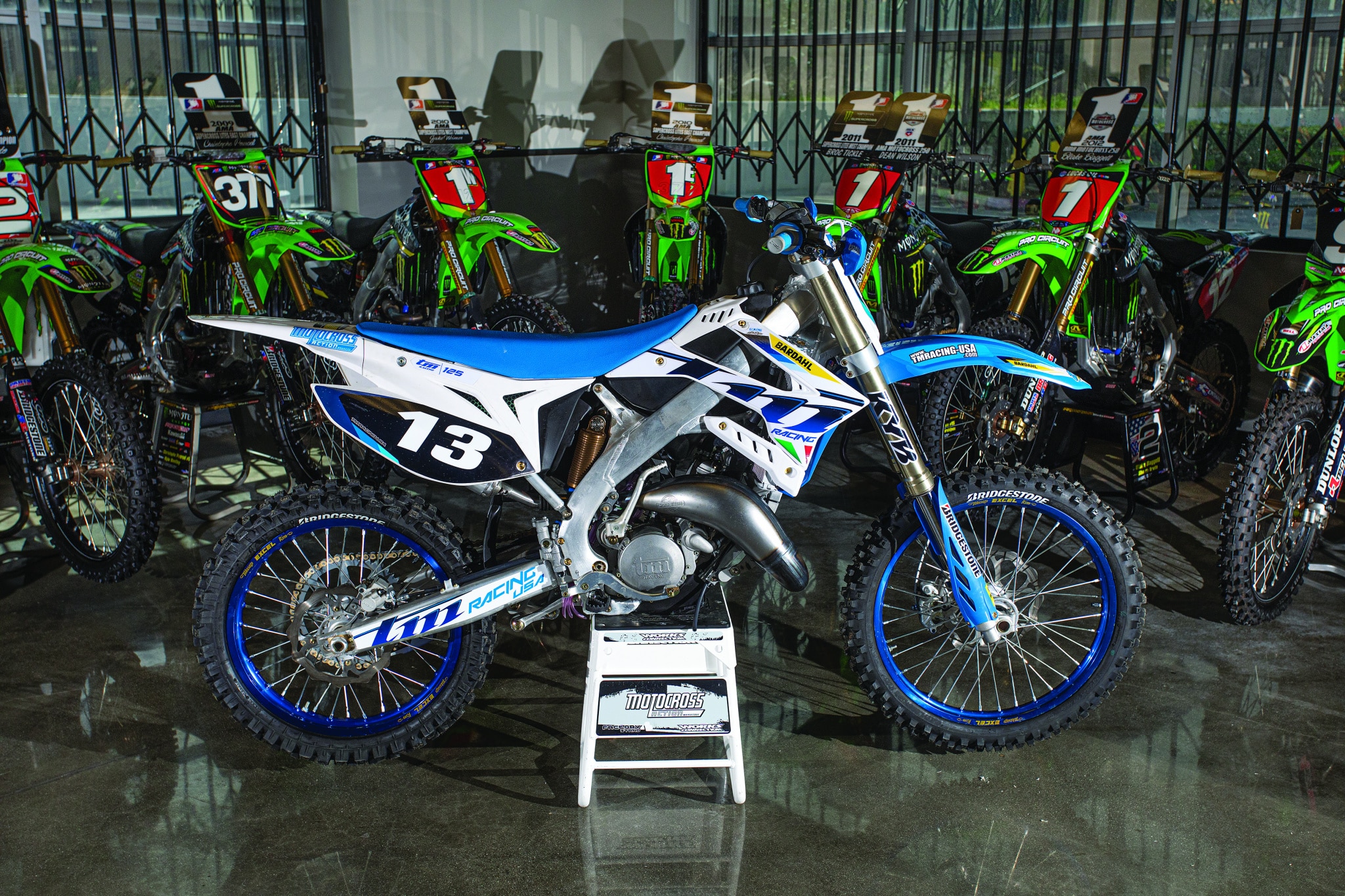

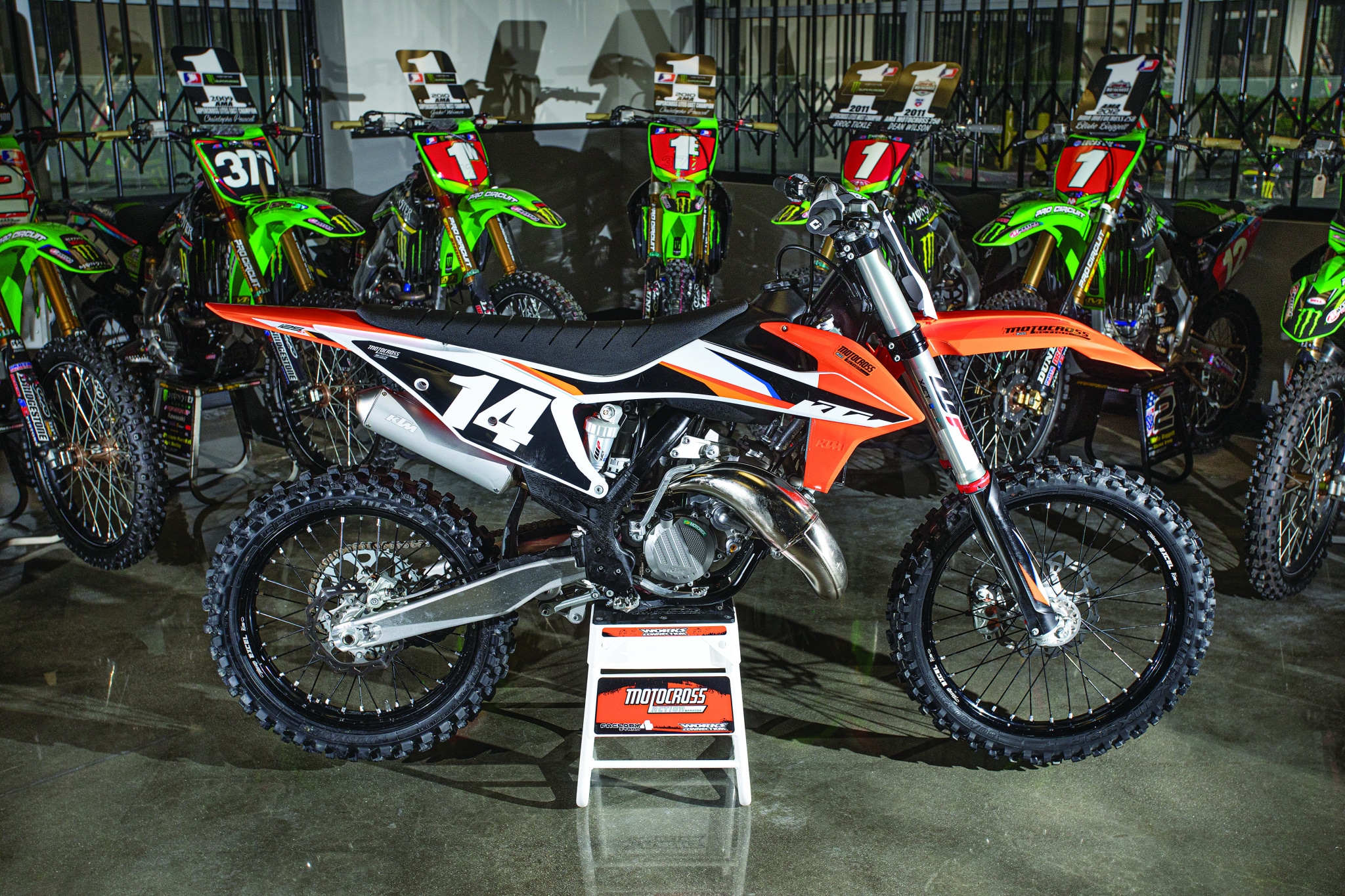


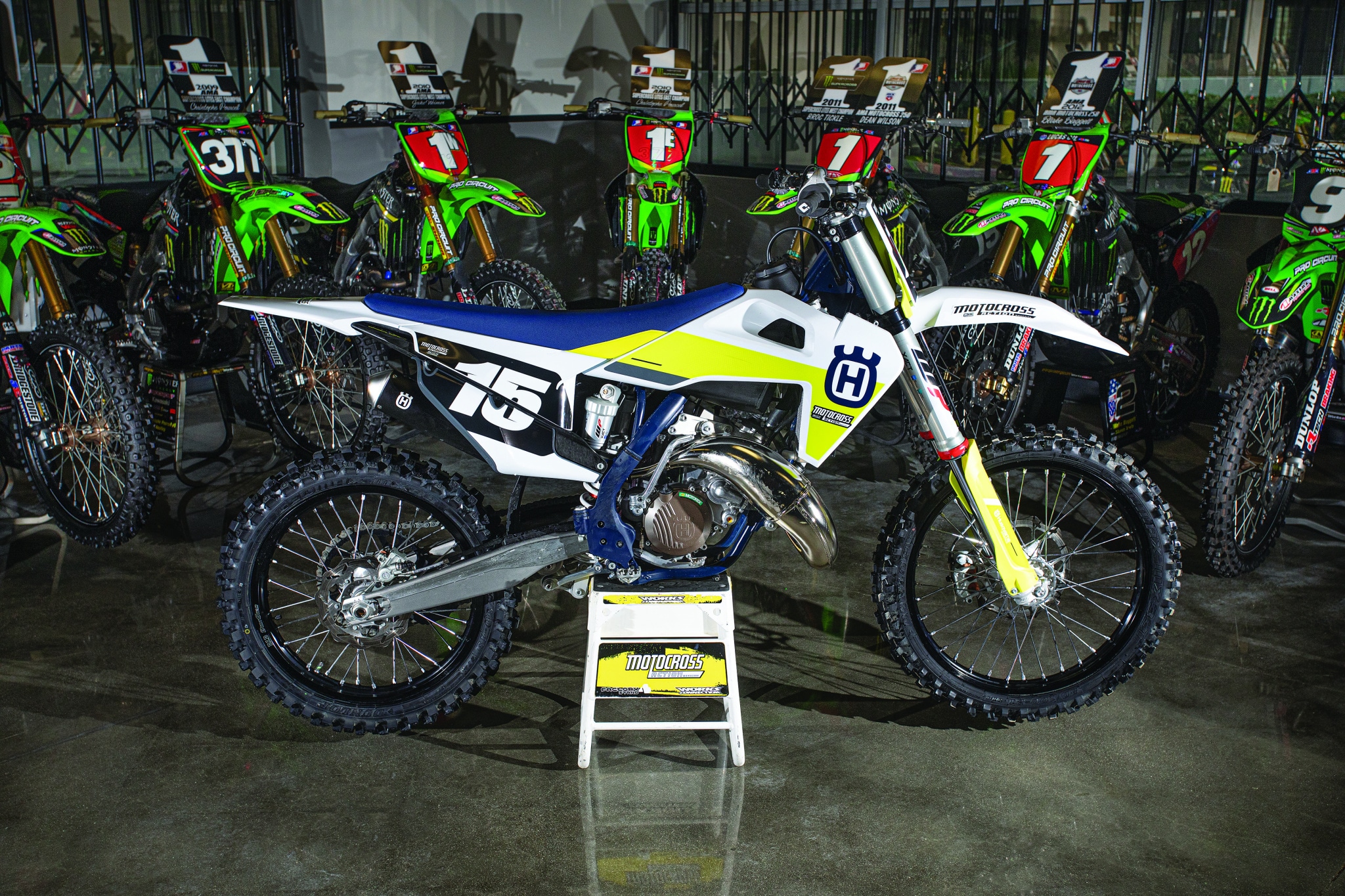
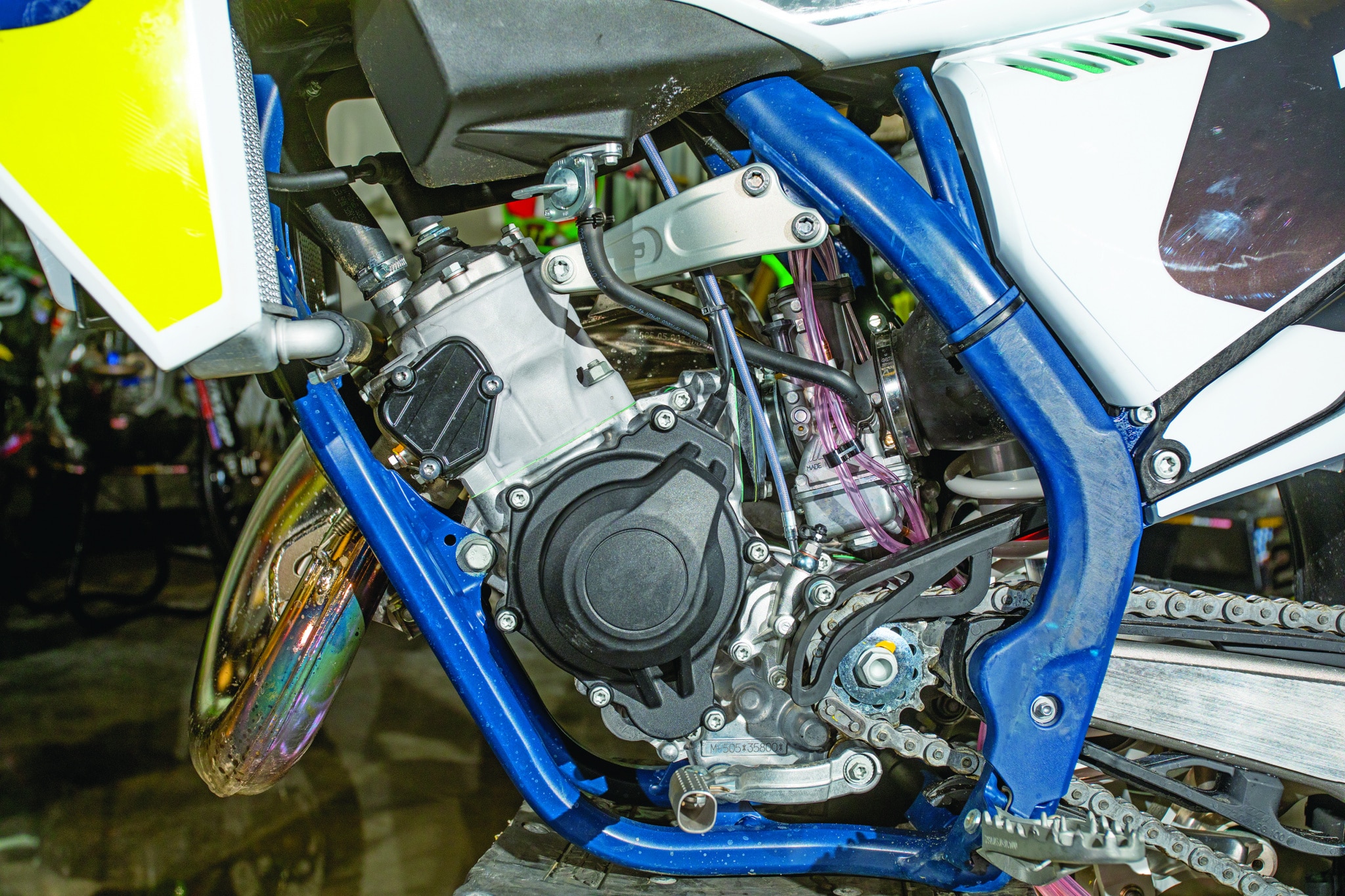
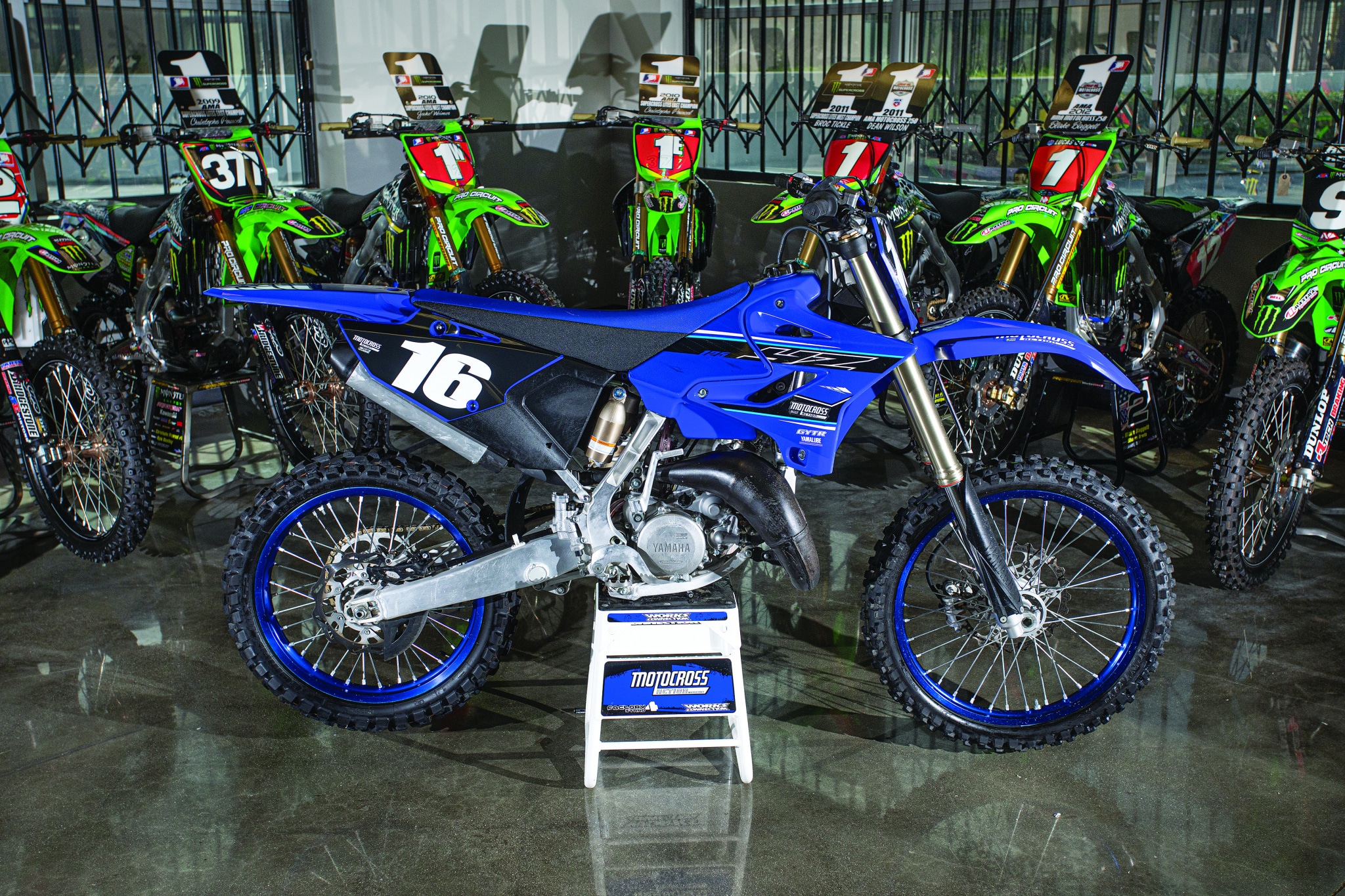

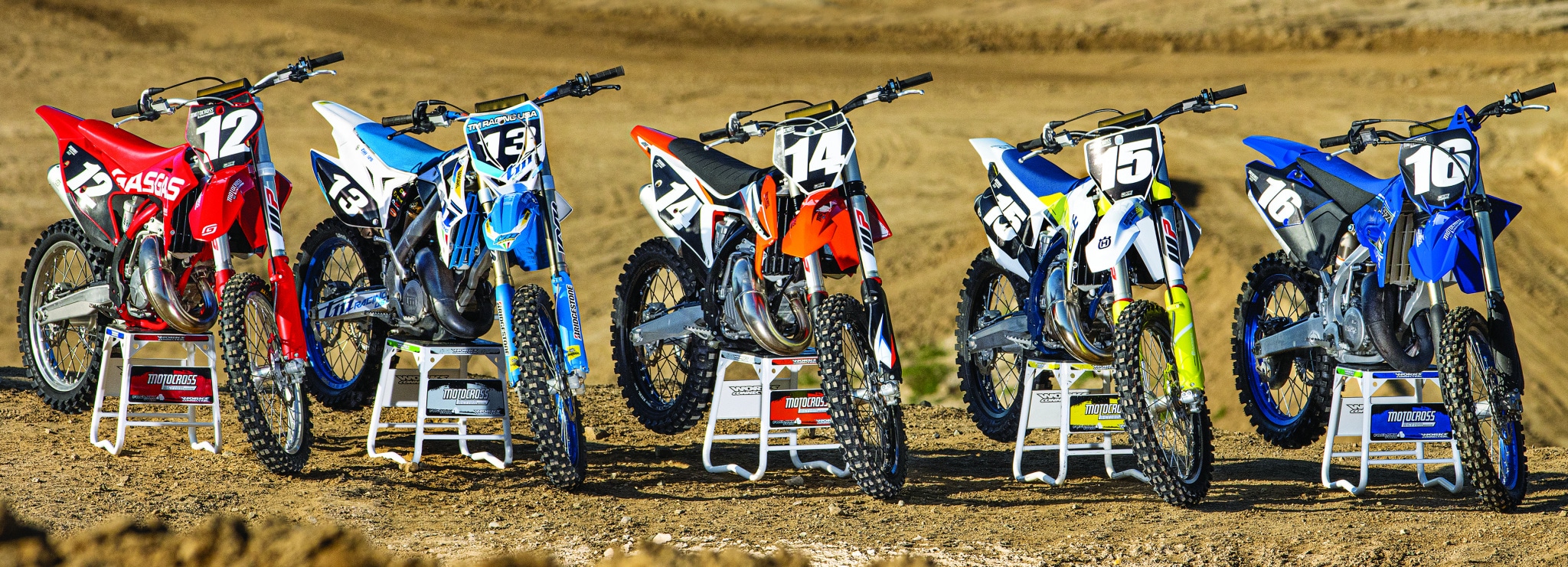
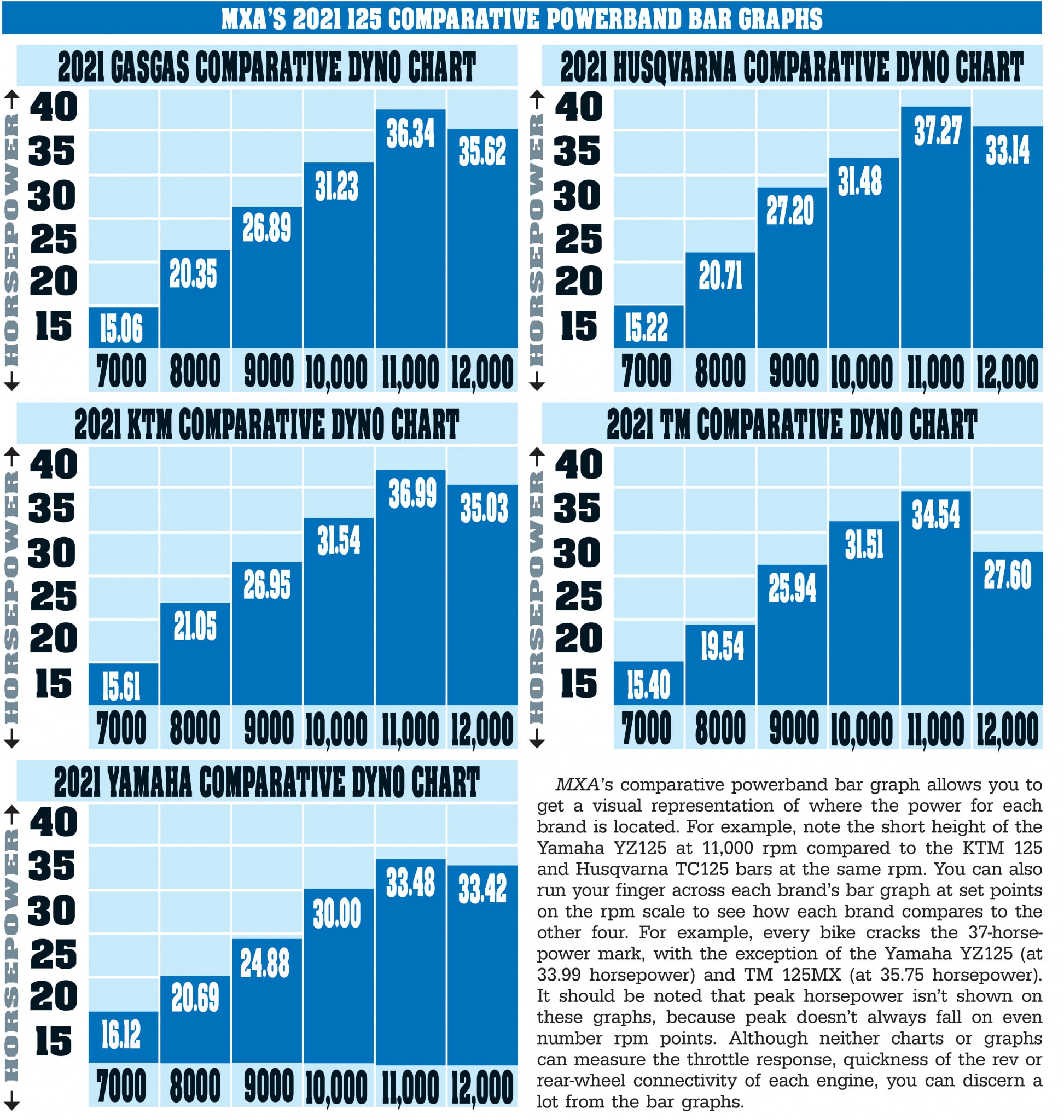

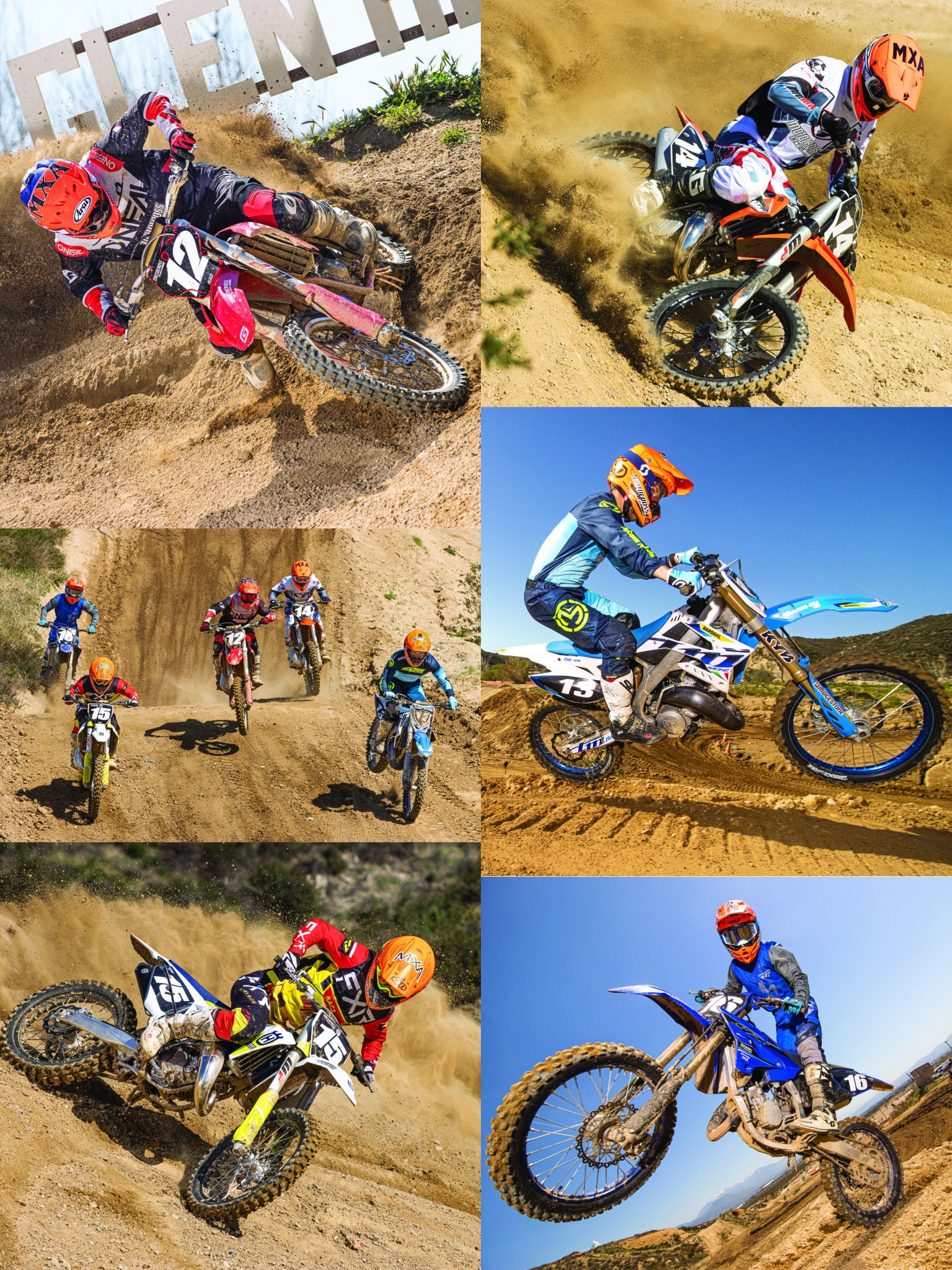
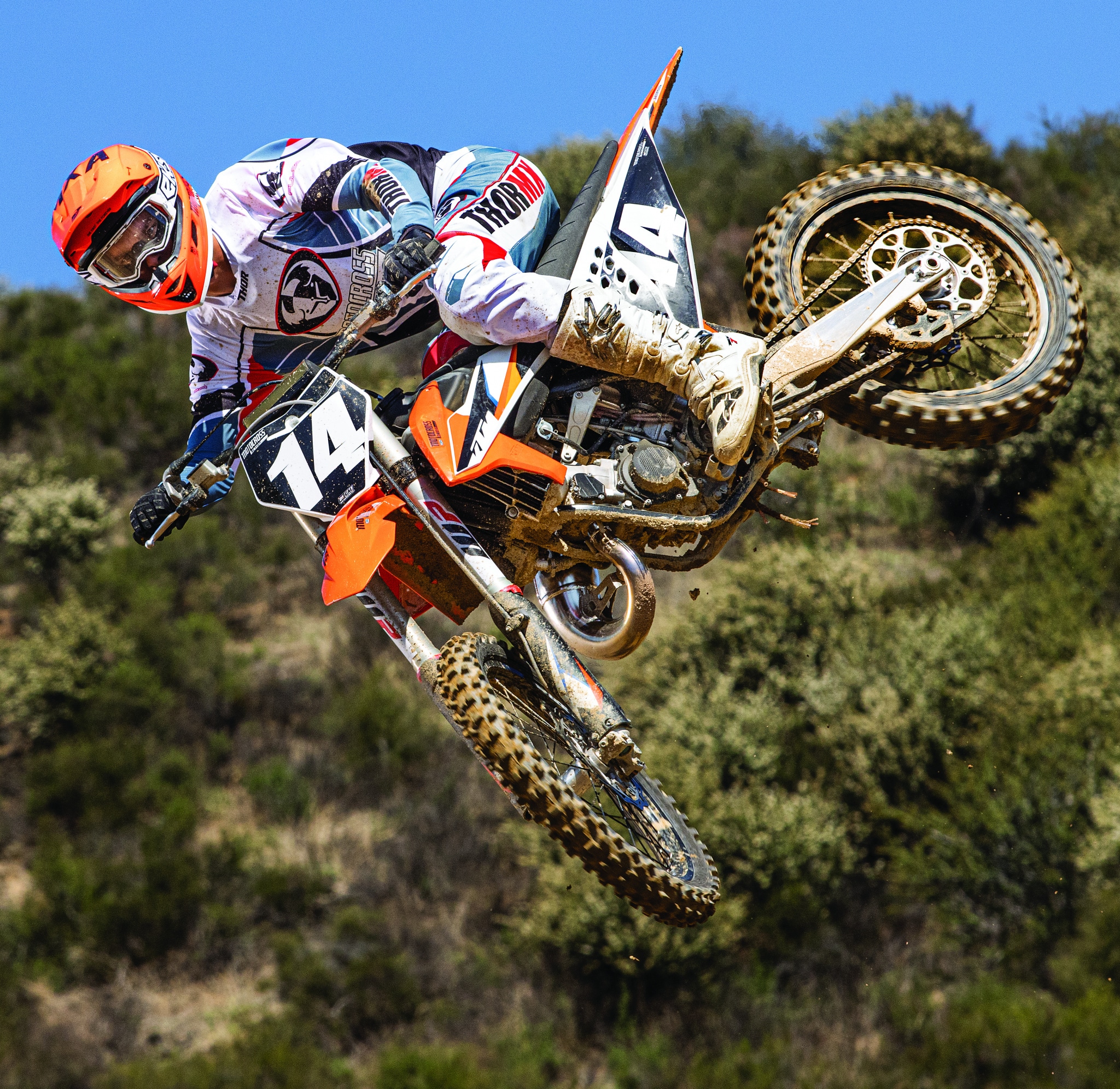



Comments are closed.